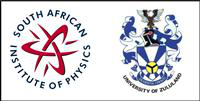Speaker
Apply to be<br> considered for a student <br> award (Yes / No)?
No
Abstract content <br> (Max 300 words)
Self-assembled organic monolayers on metal substrates are currently considered as templates for the ordered organization of “isolated” metallic atoms [1] as well as for spintronics applications [2, 3]. The fine control on the self-assembling and on the magnetic anisotropy represent key issues in the development of these molecule-metal interfaces. For magnetic interfaces, there is a strong urge to develop magnetic molecular materials by designing new combinations of interactions between magnetic centres in organic materials and substrates based spins. Recent developments in the field of surface magnetism and the possible applications of some paramagnetic 3d metallo-porphyrins as switchable elements in molecular spintronic devices, have generated much interest into the structural and magnetic properties of these molecules [3]. Here we show how synchrotron radiation based techniques are extremely important to understand in detail the adsorption geometry, the magnetic and electronic structure of porphyrin systems on metals and the possible changes of these molecules during the adsorption and the interaction with the substrate. Combining synchrotron measurements with scanning tunnelig microscopy and DFT calculations allow to obtain a complete picture of several behaviours observed in these systems.
References
[1] M. Turner et al., J. Am. Chem. Soc.131 (2009), 14913.
[2] A. Scheybal et al., Chem. Phys. Lett. 411 (2005), 214.
[3] H. Wende et al., Nature Mat. 6 (2007), 516.
[4] G. Di Santo et al., Chem. Eur. J. 17 (2011), 14354; G. Di Santo et al., Chem. Eur. J. 18 (2012), 12619; A. Goldoni et al., ACS Nano 6 (2012), 10800.
Would you like to <br> submit a short paper <br> for the Conference <br> Proceedings (Yes / No)?
No
Level for award<br> (Hons, MSc, <br> PhD)?
PhD

